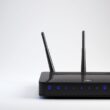Encountering the SOS indicator in the top-right corner of your iPhone can be perplexing. If you find yourself asking, “Why does it say SOS on my iPhone?” don’t panic. Take a moment to read this guide, where we elucidate the significance of the SOS message on your iPhone’s status bar and provide solutions to eliminate it.
The appearance of the SOS icon or SOS-only text signals a disruption in your iPhone’s cellular network. Consequently, you may experience an inability to engage in regular phone calls, send messages, or use cellular data. However, the silver lining is that you can still make emergency calls, explaining the SOS moniker. Emergency numbers like 911 (US), 112 (Europe), or their equivalents in other regions remain accessible.
Typically situated in the top-right corner on iOS 16 and the top-left corner on earlier versions, the SOS icon serves as an indicator of potential issues with your iPhone’s cellular connectivity.
Why Is My iPhone Displaying SOS?
Various factors could contribute to your iPhone displaying the SOS indicator. It may suggest a lack of proper cellular network reception due to being in an area with poor coverage. Alternatively, it might indicate issues with roaming privileges, changes in network settings, incorrect SIM card insertion, or SIM card malfunctions resulting from non-payment, physical damage, or other causes.
To restore regular cellular services, addressing the underlying cellular connection issue is imperative.
Note: The SOS icon is typically visible in Australia, Canada, and the U.S.
How to Remove SOS Only on iPhone
If the SOS indicator appears in your iPhone’s status bar, consider the following steps to eliminate it:
- Restart Your iPhone: Begin by restarting your iPhone. Press and hold the Power button, slide the Power slider to turn off the device, wait a few seconds, and then power it back on.
- Check Network: Poor network reception could trigger the SOS indicator. Change your location to an area with better signal strength.
- Re-insert SIM: Remove the SIM card, clean it with a soft cloth, and re-insert it into your iPhone. This simple step can often resolve the SOS issue.
- Turn off Cellular Data: Navigate to Settings > Cellular Data (or Mobile Data), toggle off Cellular Data, wait, and then toggle it back on.
- Enable Data Roaming: If you’re in a different location, ensure Data Roaming is enabled. Go to Settings > Cellular Data (Mobile Data) and toggle on Data Roaming.
- Select Right Network: Check your network selection in Settings > Cellular Data (Mobile Data) > Network selection. Set it to Automatic for the iPhone to select the appropriate network.
- Enable LTE: Switch to a newer network if you’ve selected 3G in Voice & Data settings. Go to Settings > Cellular Data > Cellular Data Options > Voice & Data, choose a different mode, and consider enabling LTE.
- Update Your iPhone and Carrier Settings: Ensure your iPhone and carrier settings are up-to-date. Check for updates in Settings > General > About, connected to a Wi-Fi network, and install any available updates.
By following these steps, you can troubleshoot and potentially resolve the SOS indicator issue on your iPhone, restoring normal cellular functionality.



